|
I know, I know, . . . a lot of words. But given that most of my posts these days are ten words or less, cut me a break. I saw this post and I know it is the way many “educators” feel. As someone who has worked with thousands of people in an educational setting, I see in this post a typical “teacher” approach when things aren’t working that appeases their sense of failure but rarely succeeds in the student’s long run.
Everyday, zillions of teachers are faced with situations where they see minimal student effort, progress, and engagement. When these moments suddenly (and predictably) pile up like a twenty car accident on I95, these teachers get emotional, get loud, breakout in flop sweat, and give a rah-rah speech that always ends up sounding less like Mr. Chips and more like the death march to Baatan. While much of that post is true, it comes across as strident, pedantic, and arrogant – three qualities that are in most teachers’ wheelhouses. (I can say that because I know I can dial up "strident, pedantic, and arrogant" faster than anyone I know.) That speech NEVER works. The post is addressed to “students”. Let's get real. It doesn’t matter if the student silently read this post or someone says it to them, by the tenth word, all they are hearing is Charlie Brown’s teacher’s trombone voice. Waa, waa, waaaa. I’ll frame this conundrum with an even more common enigma: student discipline. The mistake most teachers make is they try to “teach”, inflict, or infuse student discipline while the classroom uprising is in full swing. It’s akin to building the clichéd parachute in the middle of freefall from a 747. The time to promulgate – and even more importantly – reinforce positive self-discipline is when things are running smoothly. It during these moments – and I really mean moments –when we allow students to be reflective of their positive behavior, ability to control themselves, receive praise, and most importantly, feel like success is possible. If you wait until the negative behavior begins, it’s too late, looks too emotional, and makes the teacher sound like a parent. One of the greatest gifts we can provide our charges is NOT responding like their parents. The solution? Applying positive reinforcers, early and often, when things are going right. The trick is to understand the proper frequency and amplitude of positive reinforcers, when and where to use them. You have to target reinforcement – at first, it can never be applied as an aerosol. When those who are slacking see the smiles, reinforcers, and compliments that the engaged workers are getting, they will want some of that, too, and buy in. Most instructors rarely get positive reinforcer frequency and amplitude right – they wait too long to praise because reflexively, they believe that the time spent teaching their content material is far more superior to any time on behavior modification like . . . giving constructive praise. (Funny, “constructive criticism” has always been a “thing” but I hear so little about “constructive praise”.) Educators aren’t born with fool-proof frequency and amplitude abilities – they have to be learned and exercised every day. Once I embraced and mastered this concept, things got a lot easier for me, more pleasant for the kids, and (bonus!) I had more time to present content. My years working with kids with severe cognitive and behavioral disabilities were some of most taxing years of my career, simply because of the high degree of frequency and amplitude with reinforcers that my students required. Pep talks and speeches would have sailed over their heads. With some kids, reinforcers were needed every ten seconds, every kid, every class, all day long. With some kids, it was six seconds. Do the math. It was mind-numbingly hard to keep up the reinforcers, even in a small class, because of the heightened frequency and amplitude, all the while keeping a smile on my face, playing guitar, singing, and assisting with helping the kids hold instruments. Thankfully, I worked with some of the best paraprofessionals who bought into the idea and so it wasn’t a “me” thing all the time. But this is the "job". We picked the ax so we cut the wood. Leave the speeches for the screenplays and politicians. Catch people being good – and hold a mirror up to them with your words and actions. That is our calling. |
AuthorBoyd Holmes, the Writer Archives
April 2025
Categories |
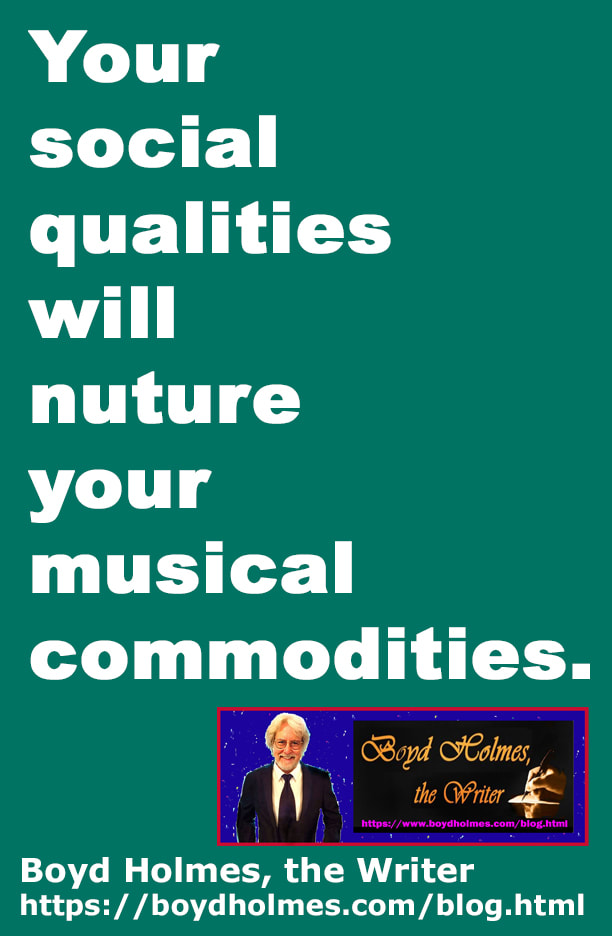
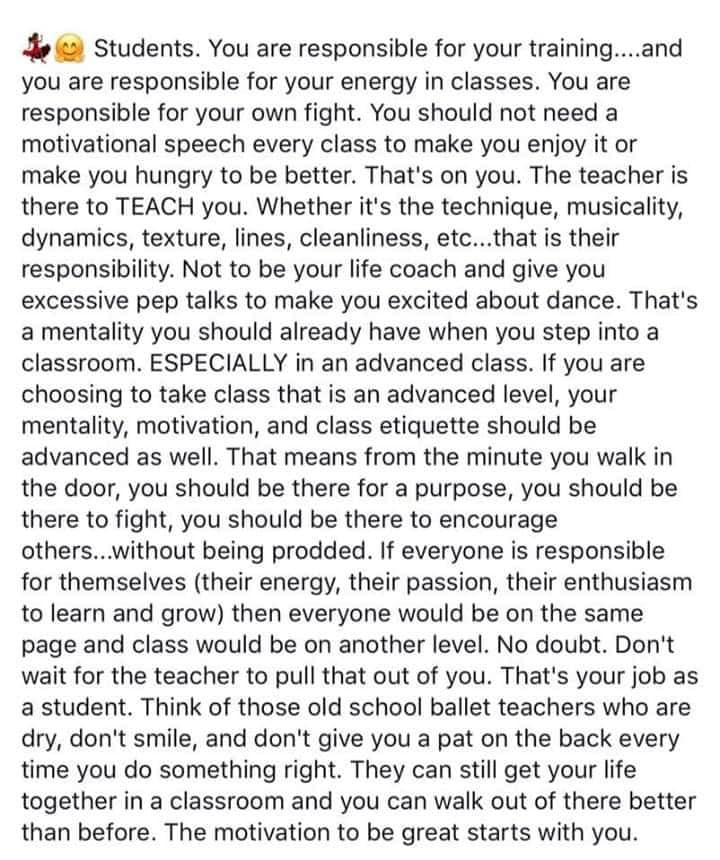
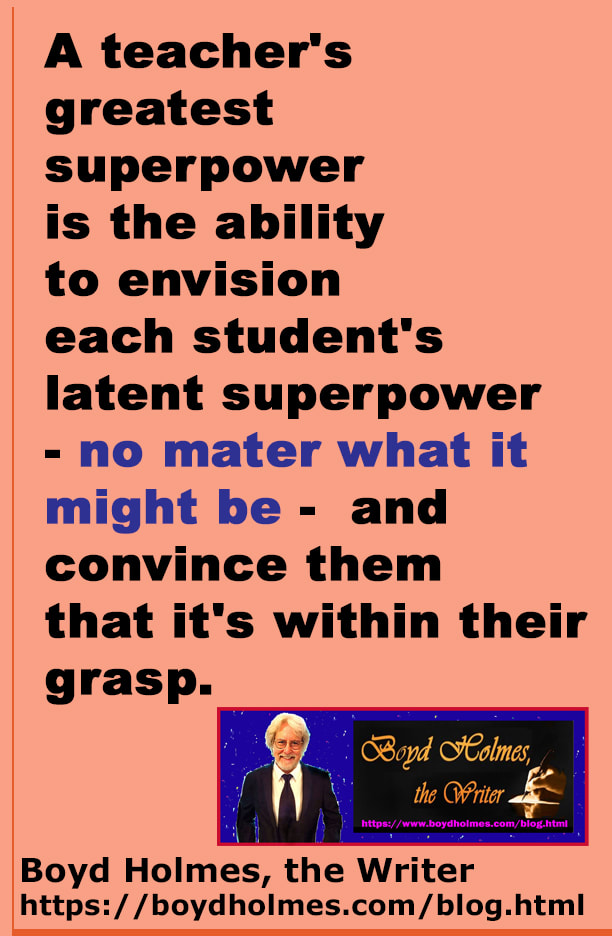

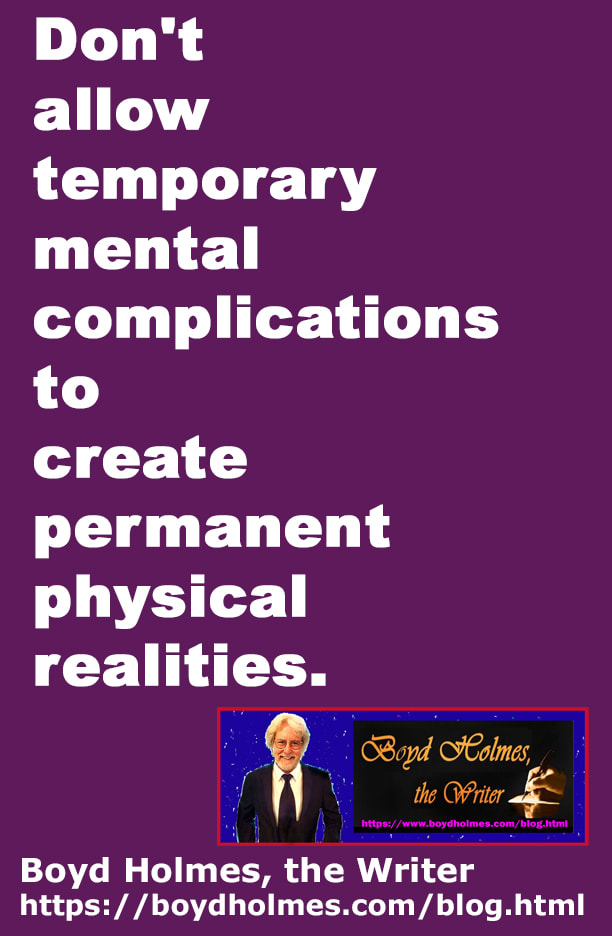
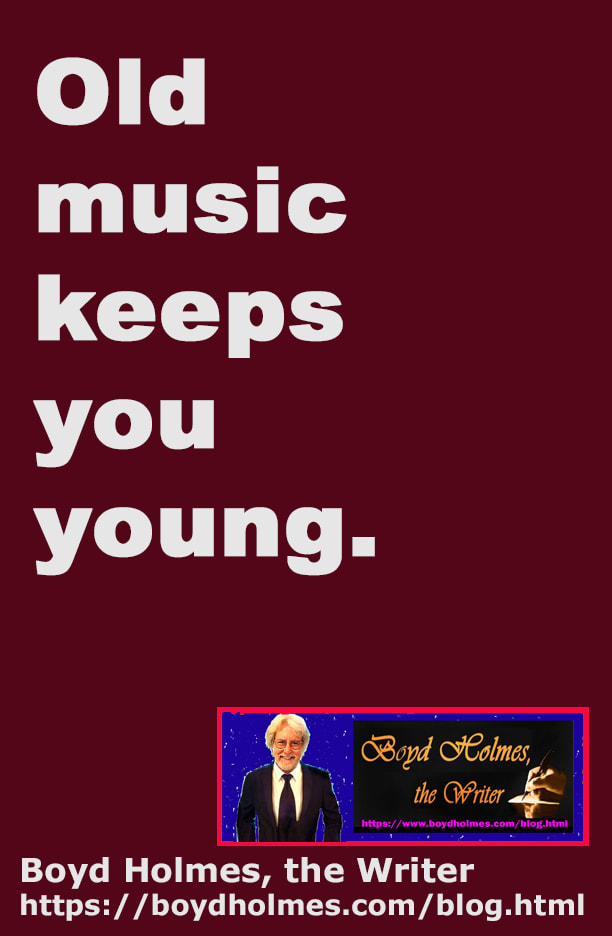
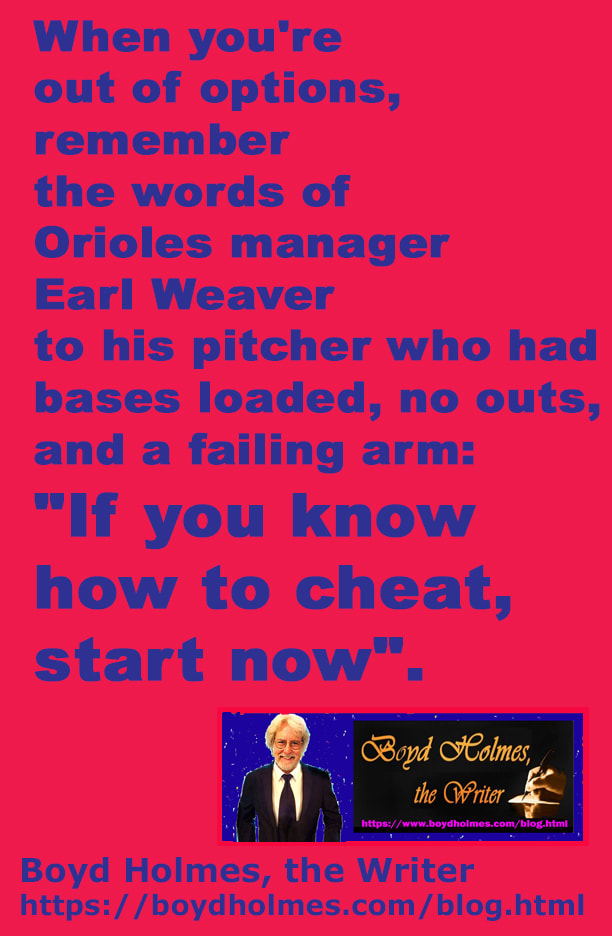
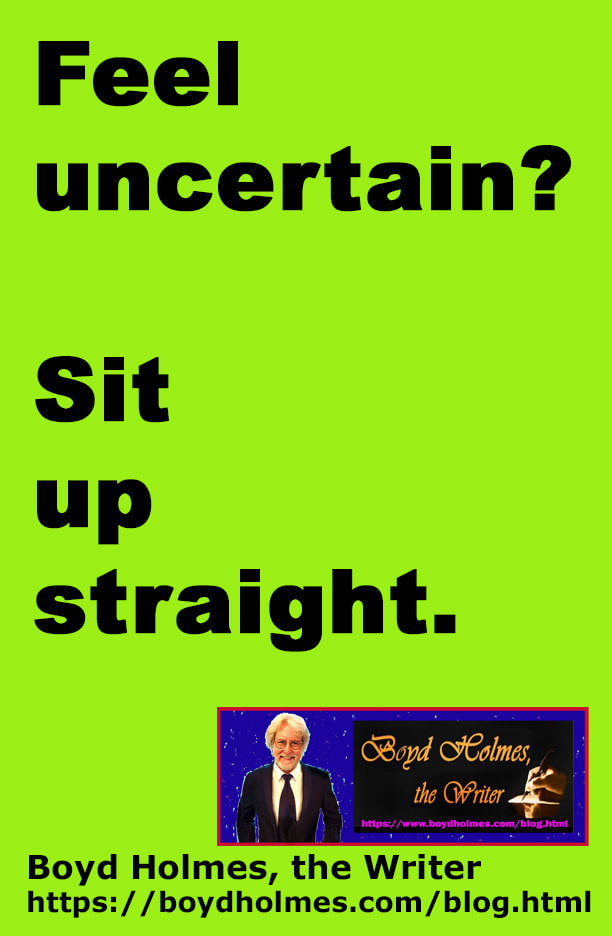
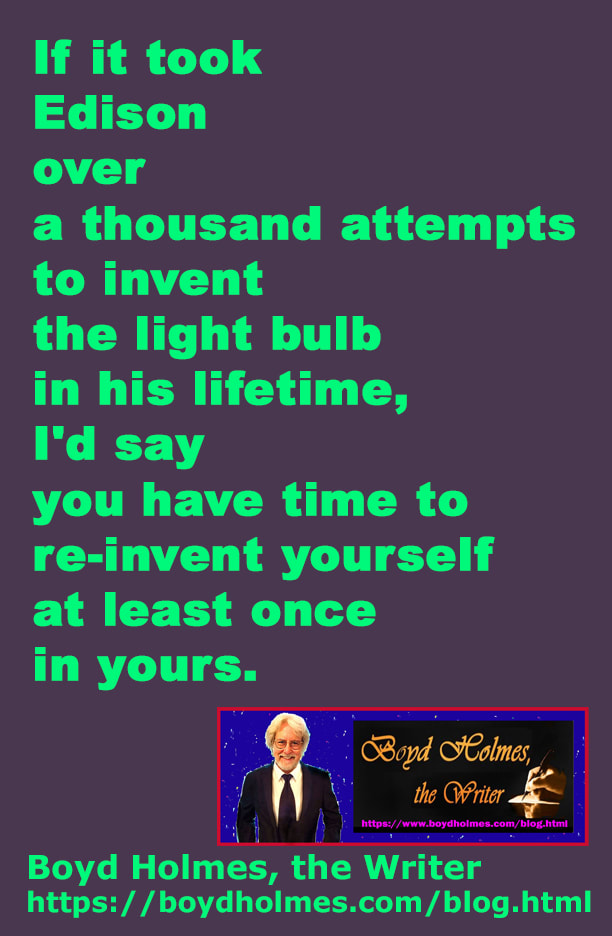
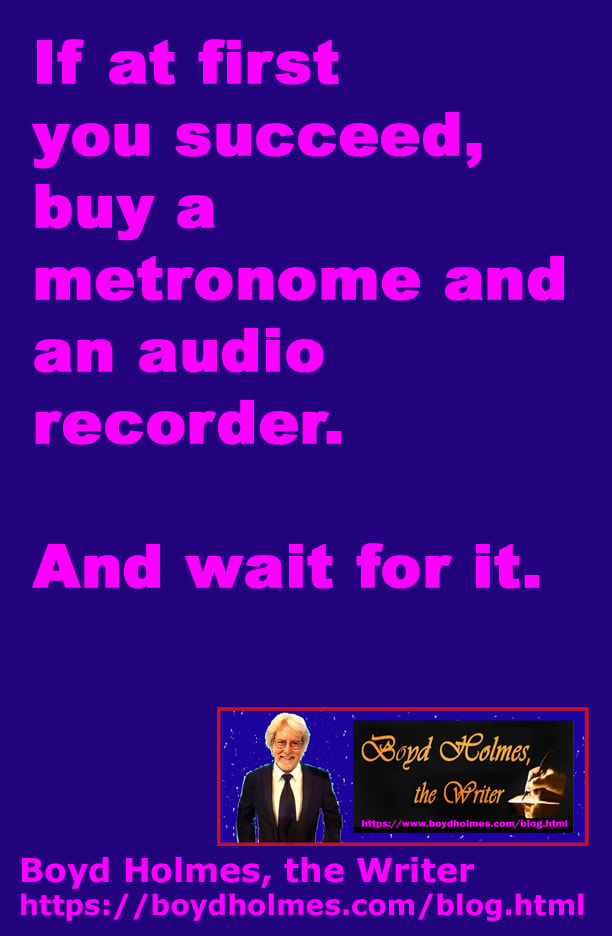
 RSS Feed
RSS Feed